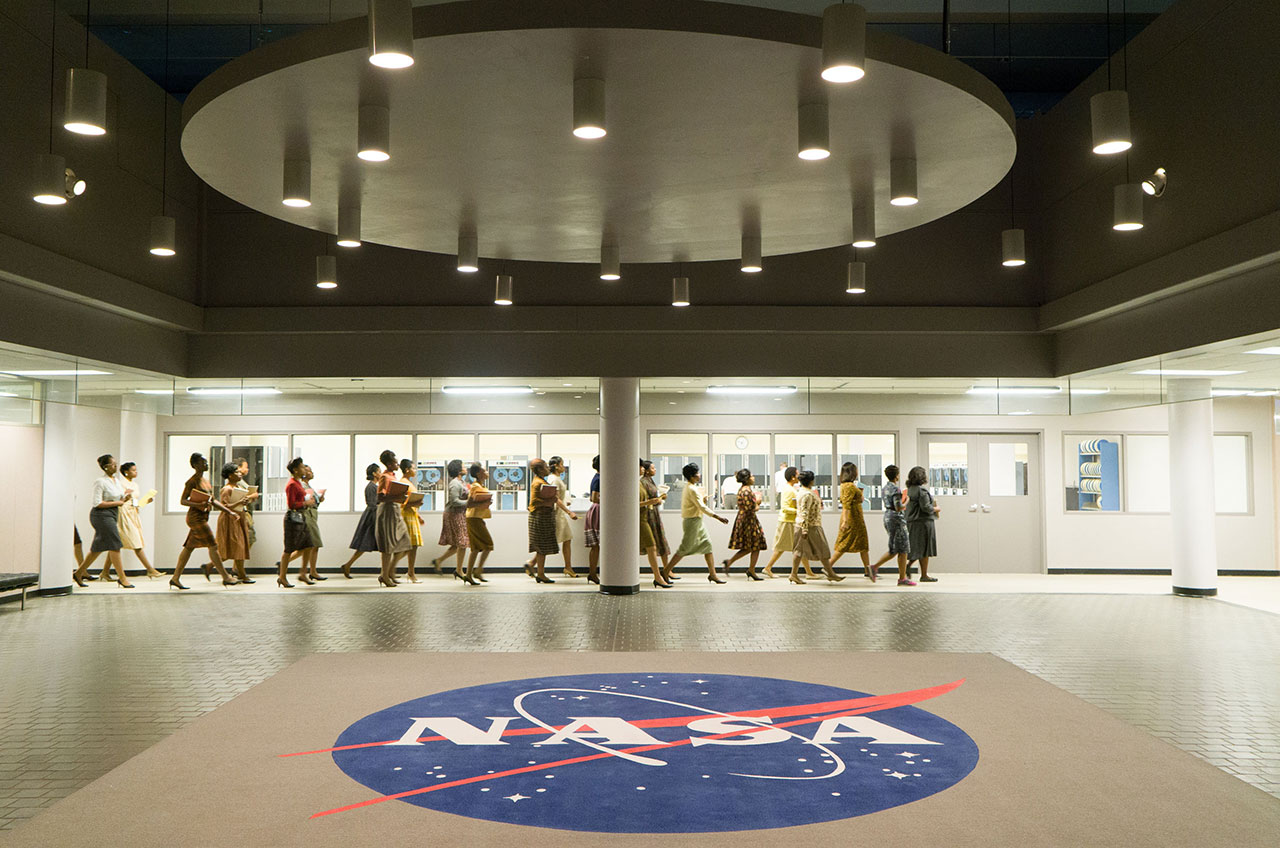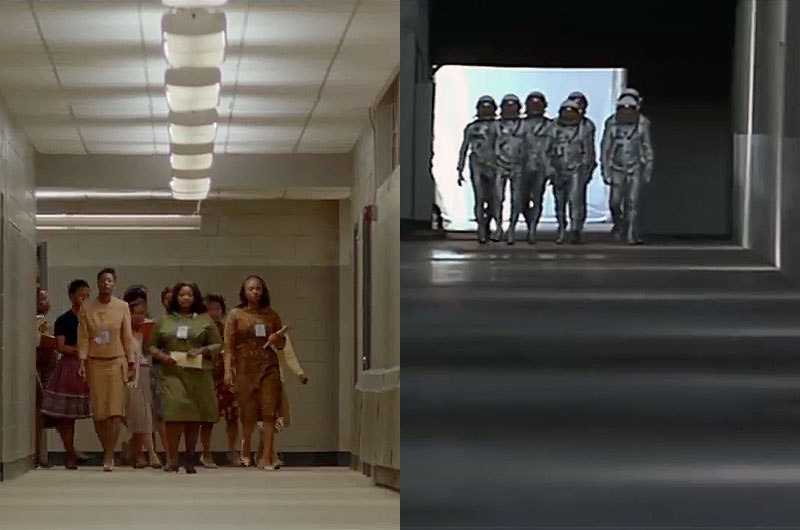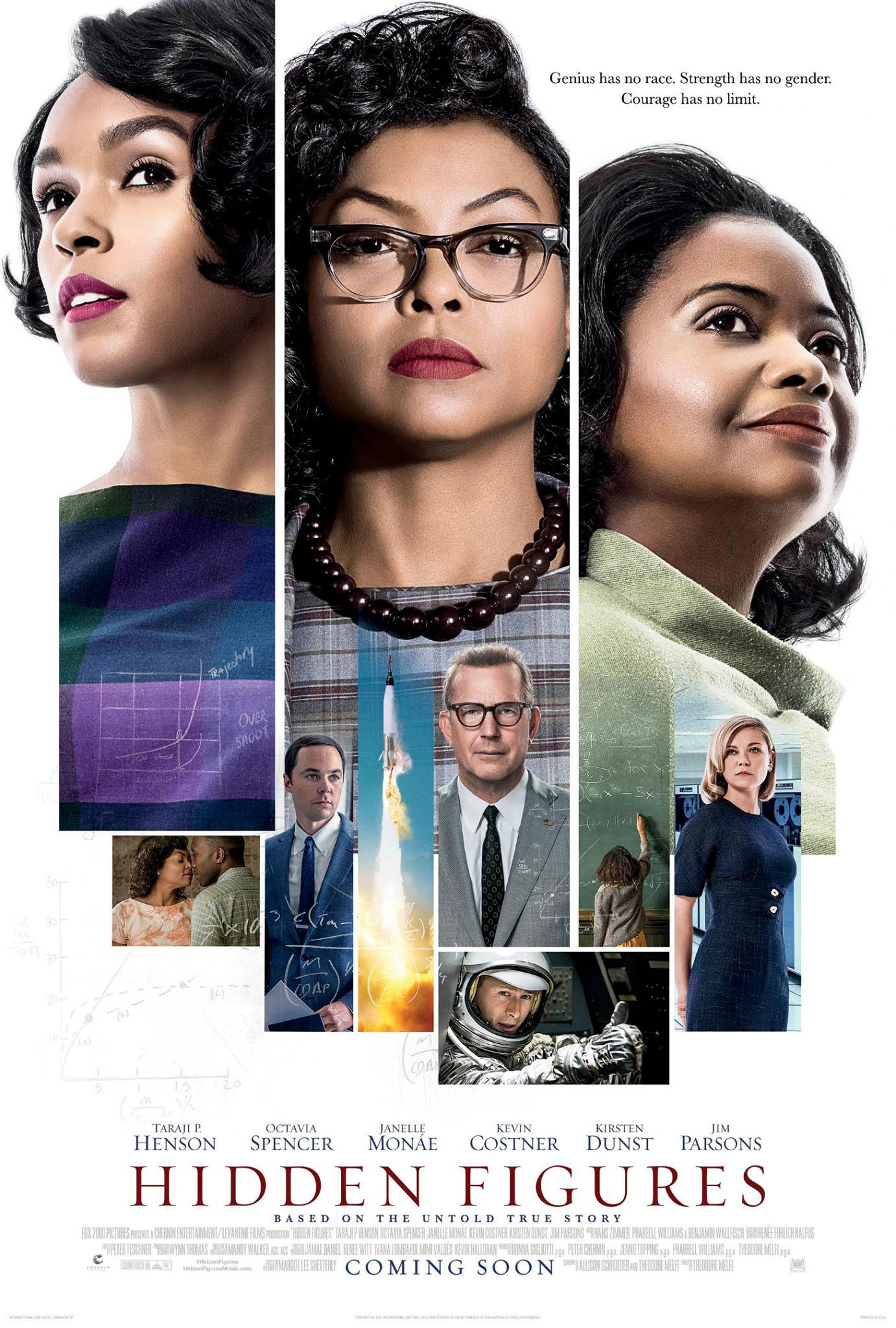'Hidden Figures': 'The Right Stuff' vs. Real Stuff in New Film About NASA History

There is a scene in the new feature film "Hidden Figures" where Octavia Spencer, portraying a real-life NASA mathematician, leads a group of her fellow African American women "computers" down a hall towards their new assignment.
The scene, which represents a moment of empowerment in the movie, evokes a civil rights march. But it also mimics an iconic clip from a 1983 feature film that was set during the same events in history, but with a different focus. In "The Right Stuff," it is original astronaut John Glenn and the other members of NASA's Mercury 7 who march down the hall, dressed in their silver spacesuits. But it is more than just that scene that links the Philip Kaufman film with director Ted Melfi's "Hidden Figures."
Both films dramatize and take liberties with the "based on true events" stories they seek to retell in order to celebrate the achievements of their respective leading characters. [On 'Hidden Figures' Set, NASA's Early Years Take Center Stage]
"They really did a big Hollywood rollicking adventure," said Margot Lee Shetterly, whose book by the same title served as the basis for "Hidden Figures." "That great spirit that the space program has — that sense of adventure and drama — they brought all of that to this movie, and these women got to be the protagonists."
The right atmosphere
"Hidden Figures," which debuted in select U.S. theaters on Sunday (Dec. 25) and opens wide Jan. 6, tells the "untold story" of Dorothy Vaughan (Spencer), Katherine Johnson (Taraji P. Henson) and Mary Jackson (Janelle Monáe) who with other black and white women served as "computers" before the electronic machines took over, both in purpose and title.
In particular, the movie focuses on the Langley Research Center in Hampton, Virginia, and the events leading up to and through the launch of John Glenn (Glen Powell), who, on Feb. 20, 1962, became the first American to orbit Earth.
Glenn has been portrayed on the silver screen just twice; first in "The Right Stuff," and now in "Hidden Figures." But whereas the earlier film centered on the adventures of the astronauts, "Hidden Figures" looks behind the scenes at the work of NASA's Space Task Group and, specifically, the challenges that its women mathematicians faced within the context of the early 1960s and the civil rights movement.
Breaking space news, the latest updates on rocket launches, skywatching events and more!
Glenn, who died on Dec. 8 at the age of 95, did not have a chance to see "Hidden Figures," but he was on record for not liking the "The Right Stuff," stating in a 1996 interview that he didn't think the film "accurately reflected the people involved in the Mercury program, including me."
It is a contention that was shared by several of his fellow early astronauts, as well as by historians.
"From an atmospherics perspective, I enjoyed 'The Right Stuff,'" said NASA's chief historian Bill Barry in an interview with collectSPACE.com. 'From a history perspective, it is cringe worthy."
Barry, who joined the agency in 2001, was not around to advise on "The Right Stuff," but he and others at NASA did offer input into the script for "Hidden Figures" at the invite of the filmmakers.
"They wanted to get the atmosphere of the film correct," he said.
"Like anything based on real-life events, there are some temporal things that, as a historian, are like, 'eh, that didn't really happen like that,' but I think that the movie is true to the stories of the main characters," he said. "On the whole I was very happy with the outcome."
Shetterly was still writing her book when production of the film began — it was only just released in September — but she was also available to the filmmakers as they sought to condense a story spanning a few decades into their setting of just a couple of years.
"For better or for worse, there is history, there is the book and then there's the movie," Shetterly said. "Timelines had to be conflated and [there were] composite characters, and for most people [who have seen the movie] have already taken that as the literal fact." [How 'Hidden Figures' Came Together: Interview with Author Margot Shetterly]

'Not a documentary'
"Movies become reality for a lot of people," said Barry.
For audiences watching "Hidden Figures" who think what they see on the screen happened exactly as depicted, they might believe Johnson, Jackson and Vaughan were close friends, that Al Harrison (Kevin Costner) was the head of the Space Task Group and that Johnson completed quick calculations as John Glenn waited on the launch pad to lift off. The real history, however, was different.
"To be able to tell a story in a way that the audience can understand and make it entertaining enough for them to be able to watch, I think the scriptwriters have to be creative and find a balance between telling the exact historic details and delivering a story that is both interesting and gets the message across," Barry explained.
"I say this all the time but the movie is not a documentary," said director Ted Melfi. "We were painfully aware and very careful with how we portrayed the women and the things they accomplished."
"There are little liberties taken here and there to dramatize, but the crux of the story is true," he told collectSPACE.com.
For Shetterly, perhaps the biggest difference between the movie and reality are the number of people depicted.
"You might get the indication in the movie that these were the only people doing those jobs, when in reality we know they worked in teams, and those teams had other teams," she said. "There were sections, branches, divisions, and they all went up to a director. There were so many people required to make this happen."
"It would be great for people to understand that there were so many more people," Shetterly explained. "Even though Katherine Johnson, in this role, was a hero, there were so many others that were required to do other kinds of tests and checks to make [Glenn's] mission come to fruition. But I understand you can't make a movie with 300 characters. It is simply not possible."

'The highest praise'
Unlike "The Right Stuff," where the general history of the Mercury 7 was already a part of the public consciousness, audiences going to see "Hidden Figures" may have little or no knowledge by which to judge the movie's veracity. That provided a freedom for the filmmakers to take liberties with the history, but also a responsibility to ensure the overall film rang true.
"I think that in these days, in particular, filmmakers have a huge responsibility to stay true to history because most people will go to see the movie and they are never going to read the book, much as everyone should read Margot's book — it is great a book and well-researched and much better than [Tom Wolfe's] 'The Right Stuff,' quite frankly," stated Barry.
Barry thought "Hidden Figures" delivered more truth than fiction, despite the limitations of the medium.
"On the whole, I am pleased with the balance of this thing and I think it does a good job of telling a complex story," he said.
Shetterly also enjoyed the film, which she said embodied the "spirit of authenticity."
"I loved it. I mean, really, honestly," she said. "I was crying, I was laughing, I was just like, 'What happens next? Does Glenn make it back home?'"
"I think a lot of people will get sucked into the movie and get transported to NASA-land. I hope so," Shetterly said.
"I have told my employees that I hope every single one of them gets to see it," NASA Administrator Charles Bolden told collectSPACE.com. "They will laugh, they will cry through it and a lot will get very angry because it not a black women story, it is the story of any minority in a technical field, even today."
Ultimately though, it was one of the original women who is depicted in "Hidden Figures" who perhaps offered the best endorsement for the film.
"Katherine Johnson saw the movie and she really liked it," said Shetterly. "So I think that is pretty much the highest praise you can give, when the person whose life is being shown on the screen says 'Yep, that kind of looks like it!'"
Return to collectSPACE in the week leading up to "Hidden Figures" opening on Jan. 6, 2017 for a more in-depth look at some of the history depicted in the film.
Watch a behind-the-scenes look at the hidden story in "Hidden Figures" at collectSPACE.
Follow collectSPACE.com on Facebook and on Twitter at @collectSPACE. Copyright 2016 collectSPACE.com. All rights reserved.
Join our Space Forums to keep talking space on the latest missions, night sky and more! And if you have a news tip, correction or comment, let us know at: community@space.com.

Robert Pearlman is a space historian, journalist and the founder and editor of collectSPACE.com, a daily news publication and community devoted to space history with a particular focus on how and where space exploration intersects with pop culture. Pearlman is also a contributing writer for Space.com and co-author of "Space Stations: The Art, Science, and Reality of Working in Space” published by Smithsonian Books in 2018.In 2009, he was inducted into the U.S. Space Camp Hall of Fame in Huntsville, Alabama. In 2021, he was honored by the American Astronautical Society with the Ordway Award for Sustained Excellence in Spaceflight History. In 2023, the National Space Club Florida Committee recognized Pearlman with the Kolcum News and Communications Award for excellence in telling the space story along the Space Coast and throughout the world.
